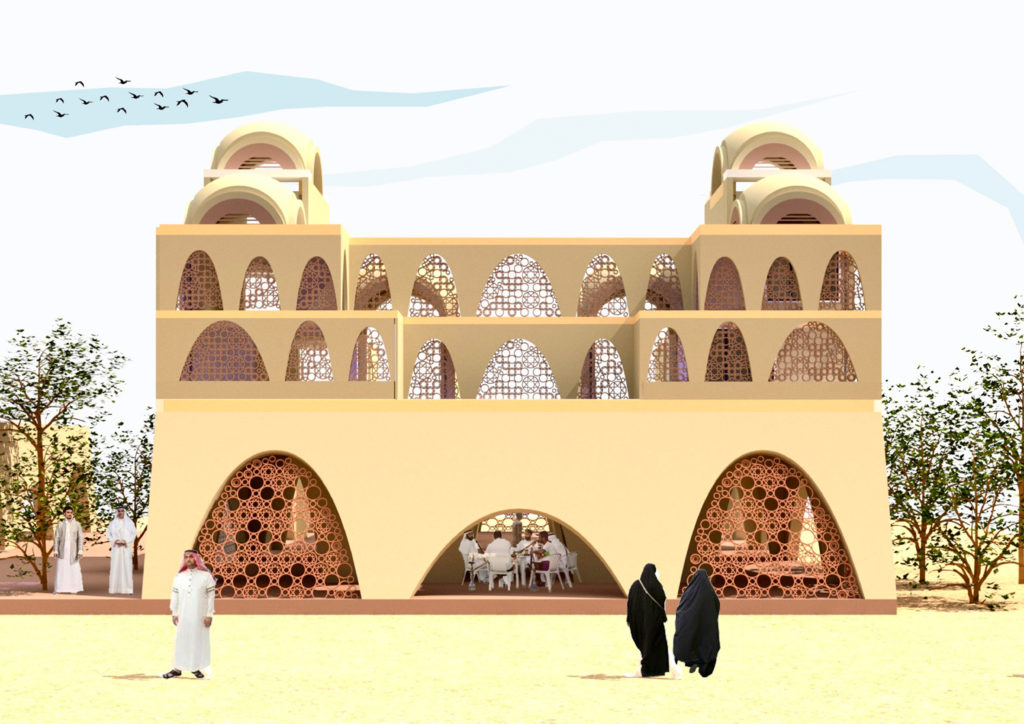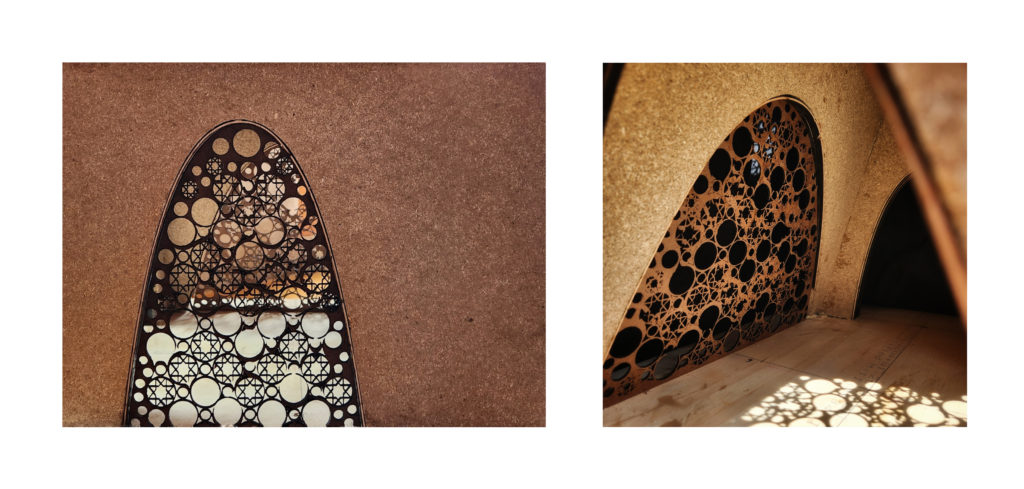Aswan, Egypt being in a hot & arid climate follow specific passive strategies, which are incorporated in the design. Installing a lattice patterned terracotta skin was seen as the primary idea for envelopes considering it enhanced the functionality of the passive strategies incorporated. Further, the thermodynamic study of heat sources & sinks indicate at the need of envelope not only on the facades but also horizontally covering the courtyards in day time.
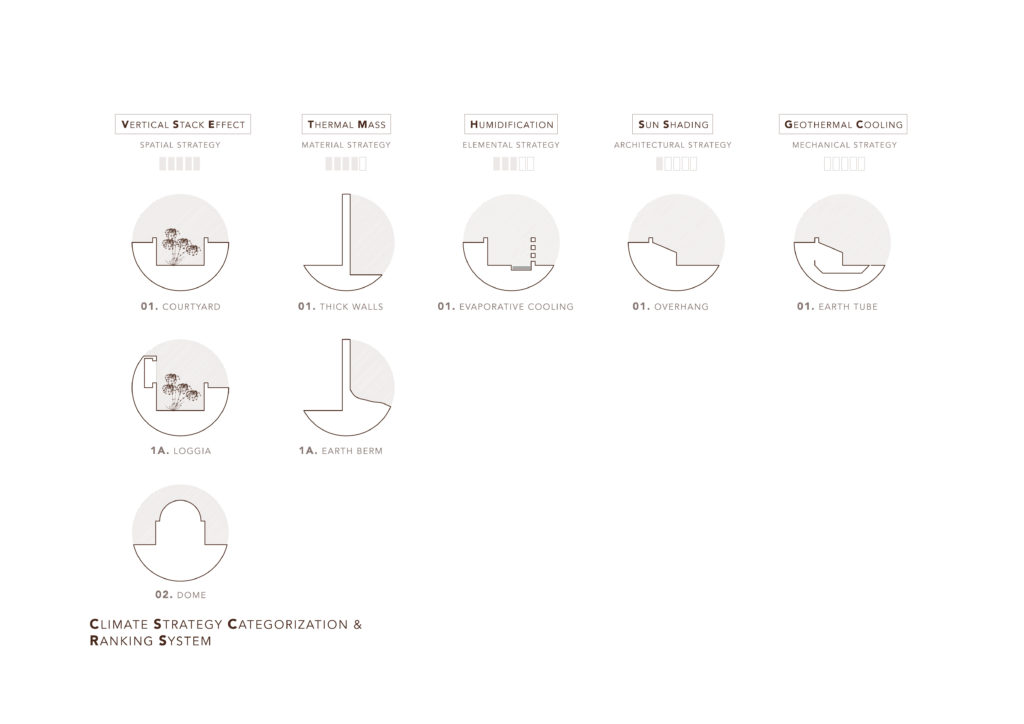
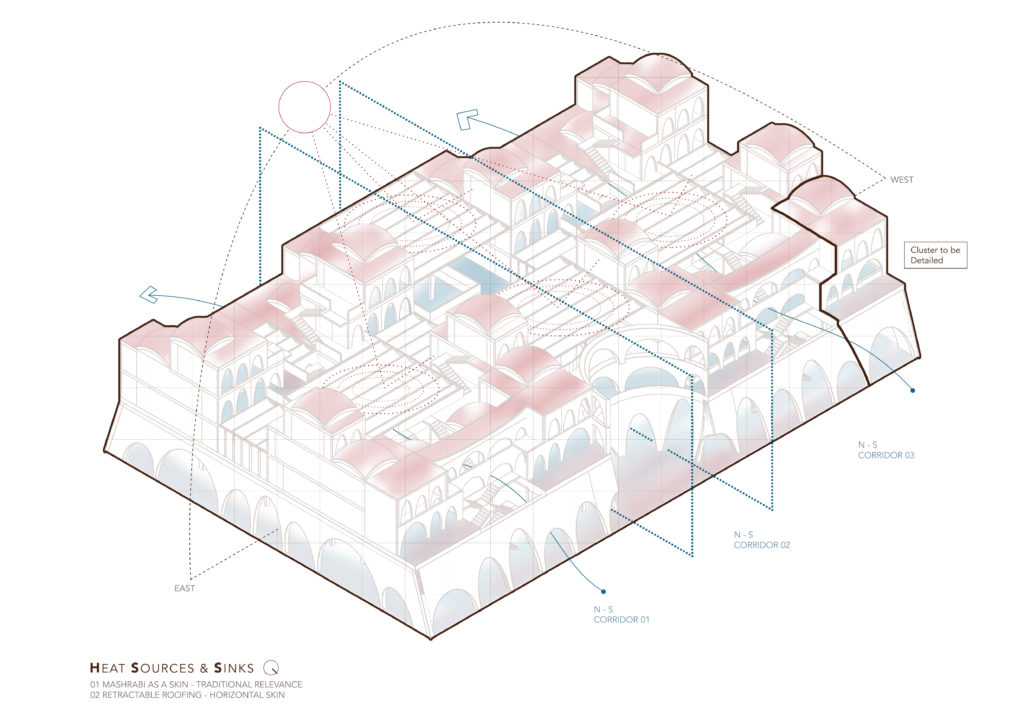
Considering the prevailing winds to be from North towards South, small water ponds are provided on north periphery for evaporative cooling. As the first layer of skin, Mashrabiyan, which is a traditional lattice element is installed to filter the winds. Following a buffer space are the binder walls of the residential units that are sandwiched with hemp board as insulation for thermal comfort.
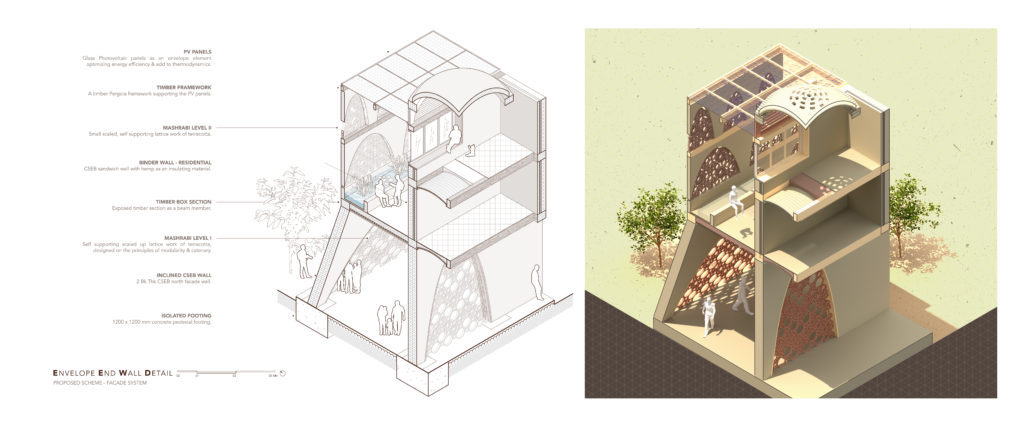
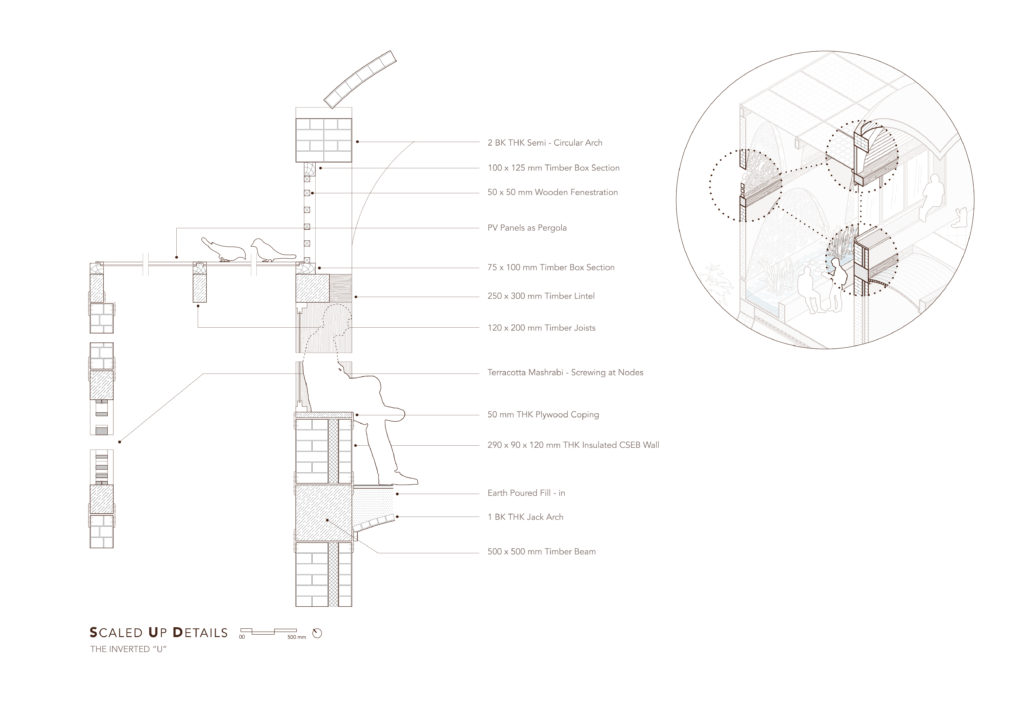
Since the structural arches follow the principle of catenary, the same is followed by the Mashrabiyan for a self-supporting system. Breaking out of the traditional squarish moulds, the project develops a modular system with circular patterns based on nodal geometry. The inner patterned grid not only has a traditional value but has a structural purpose as its functions as a bracing for larger terracotta pieces. The initial idea of tessellations gets evolved into a circular geometry & hence the final outcome is an amalgamation of two different geometries & the larger idea of catenary.
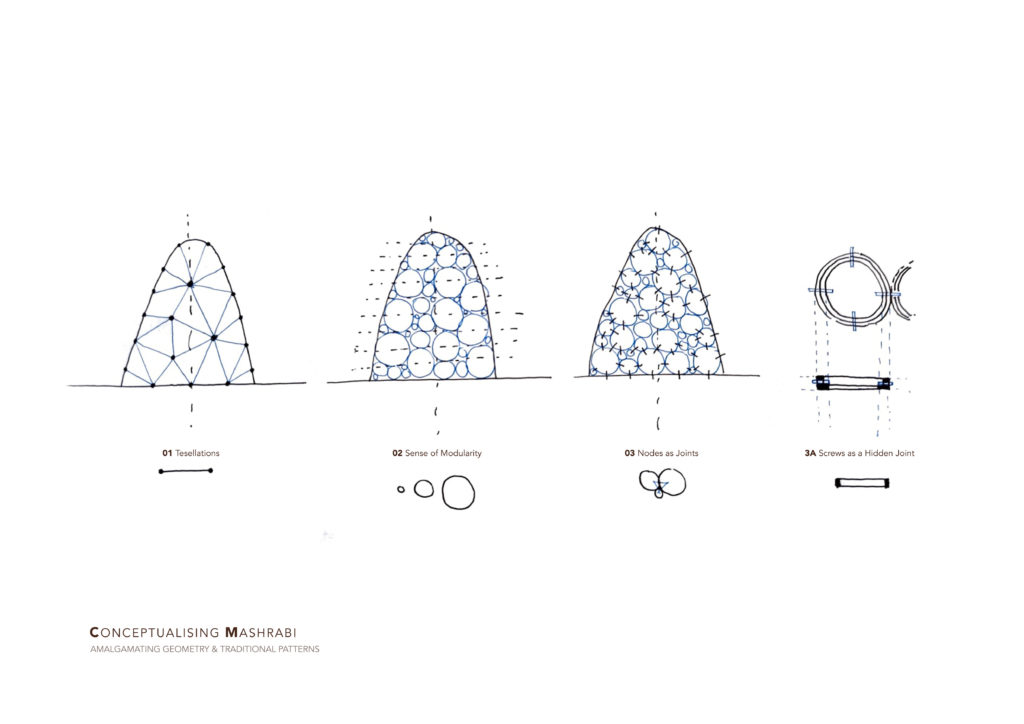
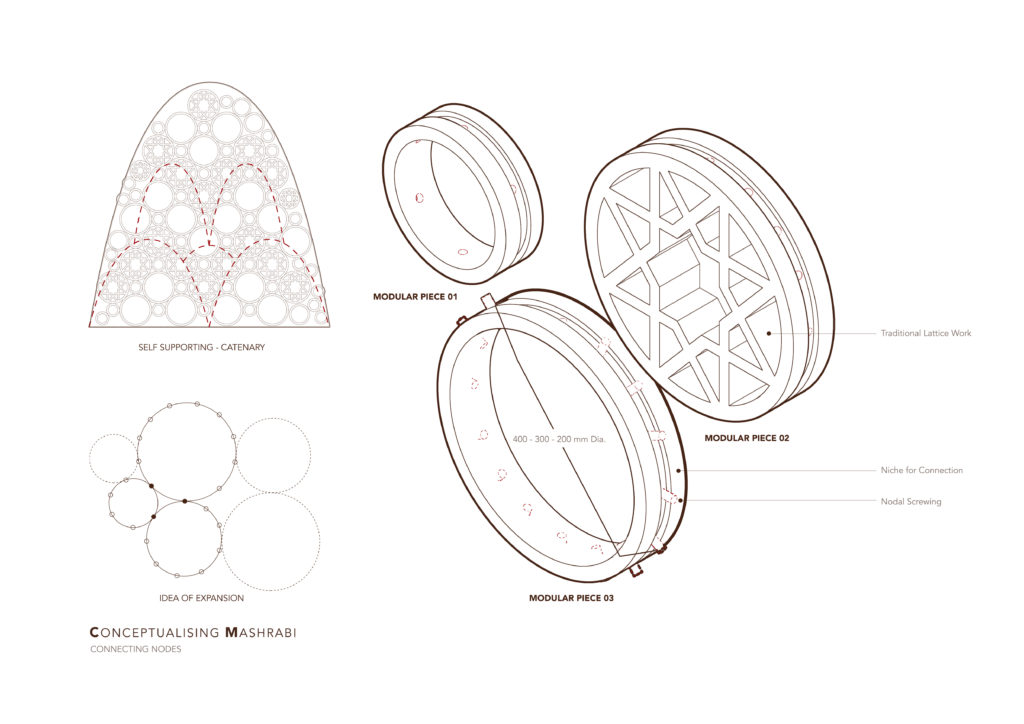
The diurnal nature of the climate demands for a horizontal envelope to cover the courtyards in day time & open up the same in nights for the hot air to dissipate without any obstruction. A low-tech retractable roofing system is seen as a feasible solution for the same which also uses locally produced textile making the envelope eco-systemic.
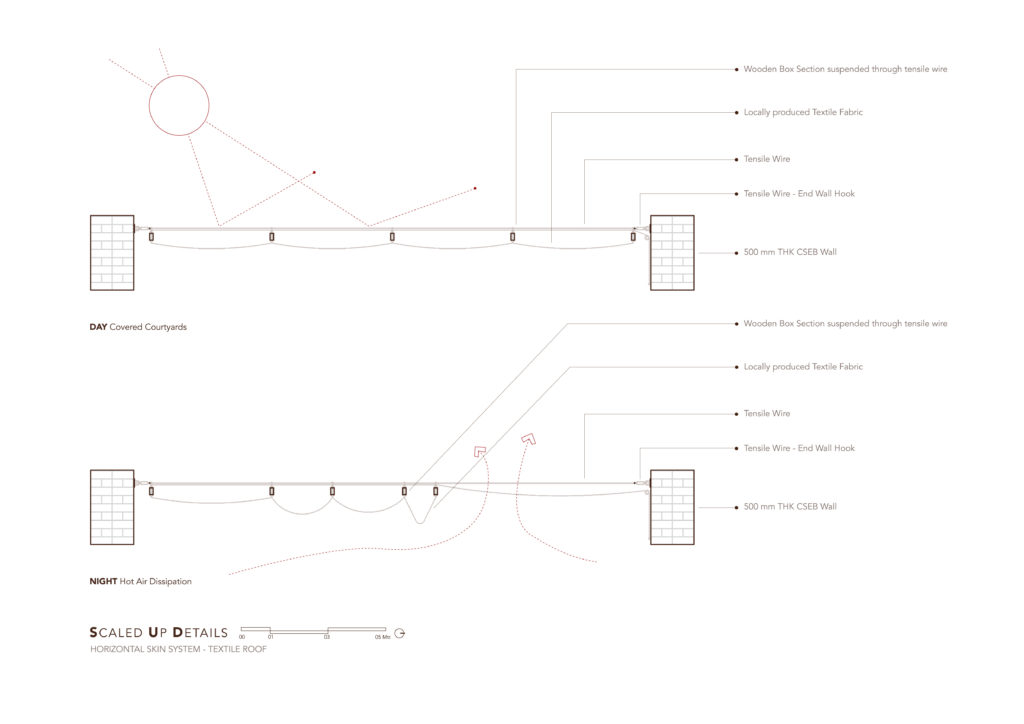
Envelopes for the project are seen as an opportunity where in a sense of contemporary could merge with the traditional elements, along with some structural value to it which makes the overall systems resilient & respnosive to the climate as well as the social fabric of the context.
